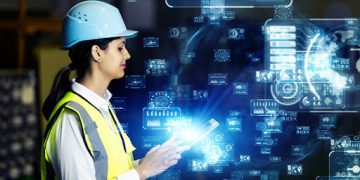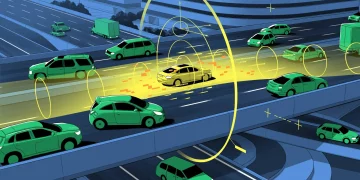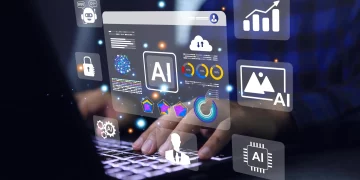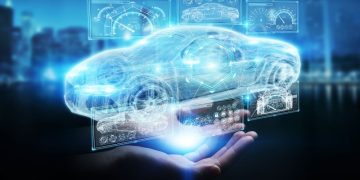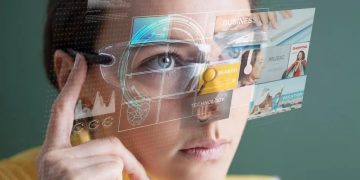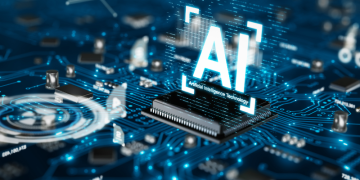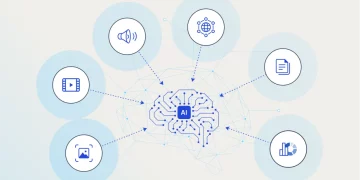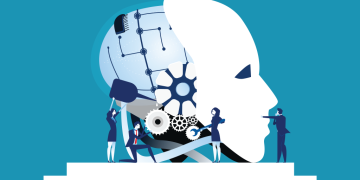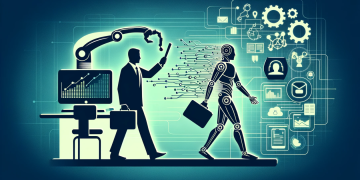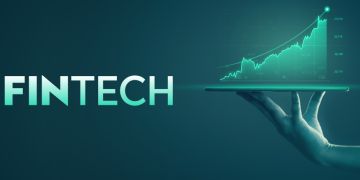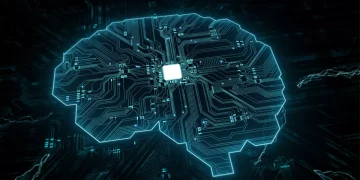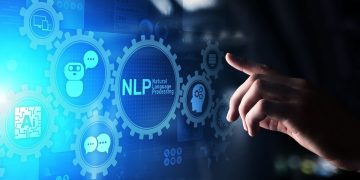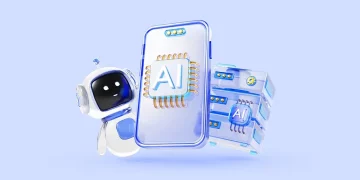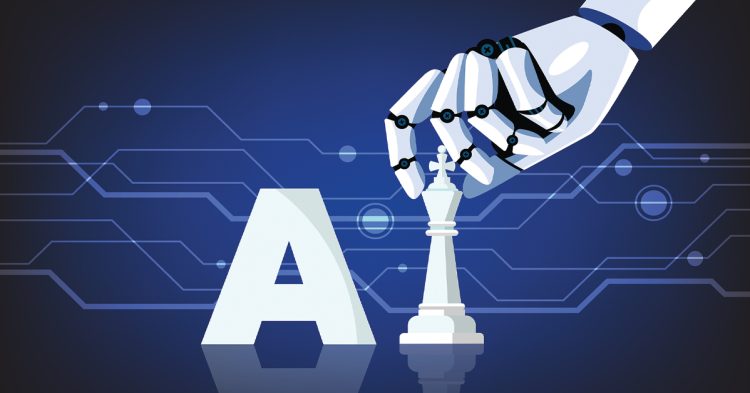Introduction
Artificial Intelligence (AI) is rapidly evolving, and its breakthroughs continue to make significant waves across various industries. From the development of sophisticated machine learning algorithms to the rise of autonomous systems, AI has begun to challenge traditional business models and alter the way organizations operate. However, as we observe the rapid advancements in AI, an essential question arises: Can the latest breakthroughs in artificial intelligence truly disrupt existing industry landscapes?
In this article, we will explore the most recent AI innovations, the implications of these technologies across different sectors, and how they have the potential to reshape traditional industry structures. We will also look at the risks and challenges AI poses to organizations and workers alike and consider how businesses can strategically prepare for this disruptive wave.
Section 1: Understanding AI and Its Recent Breakthroughs
Artificial Intelligence refers to the ability of machines to perform tasks that typically require human intelligence. These tasks include problem-solving, language processing, learning from data, pattern recognition, and decision-making. Recent advancements in AI, particularly in fields like deep learning, reinforcement learning, and natural language processing, have led to breakthrough applications that are now considered game-changers in industries such as healthcare, finance, retail, transportation, and more.
1.1 Deep Learning and Neural Networks
Deep learning, a subset of machine learning, has been one of the most significant breakthroughs in recent years. It is based on artificial neural networks that mimic the human brain’s structure and functions. This technology has allowed AI systems to learn from vast amounts of data with minimal human intervention.
Recent advancements in deep learning, particularly in natural language processing (NLP) and computer vision, have enabled AI systems to perform tasks such as language translation, content generation, facial recognition, and object detection at unprecedented accuracy. Notable models like OpenAI’s GPT-3, Google’s BERT, and DeepMind’s AlphaGo have shown AI’s capability to understand and process complex data like never before.
1.2 Reinforcement Learning and Autonomous Systems
Reinforcement learning (RL) is another AI breakthrough that has enabled machines to learn optimal decision-making policies by interacting with their environment. This approach has been key to the development of autonomous systems, including self-driving cars and robotic manufacturing.
Recent breakthroughs in reinforcement learning have not only improved AI’s efficiency in tasks like gaming and robotics but have also led to advancements in real-world applications like supply chain management and dynamic pricing models in e-commerce.
1.3 Generative AI and Content Creation
Generative AI refers to algorithms that can create new content, from text to images and even music. Tools like OpenAI’s DALL-E and GPT-3 have shown AI’s capability to generate human-like text and visual content. These systems can now write articles, generate art, create code, and even compose music, all with minimal human input. Such capabilities have profound implications for industries involved in content creation, entertainment, and design.
1.4 AI-Driven Healthcare Innovations
In the healthcare industry, AI breakthroughs have revolutionized diagnostics, drug discovery, and personalized medicine. AI-powered systems can now analyze medical imaging faster and more accurately than human doctors, and algorithms are being used to identify novel drug compounds for diseases such as cancer and Alzheimer’s.
Additionally, AI is enabling personalized treatment plans based on a patient’s genetic information, creating more effective therapies that could reduce side effects and improve outcomes. AI-powered robotic surgery is also emerging as a more precise and less invasive alternative to traditional methods.
1.5 AI and the Internet of Things (IoT)
The Internet of Things (IoT) refers to the interconnected network of devices that can collect and exchange data. When integrated with AI, IoT systems can become much smarter, with devices learning from data patterns to improve their functionality. In industries such as manufacturing, smart cities, agriculture, and logistics, AI-enhanced IoT devices are streamlining operations, increasing energy efficiency, and improving safety.
Section 2: Industries Poised for Disruption
AI’s impact is not just theoretical – we are already seeing its practical effects in various sectors. Here, we’ll look at how AI is poised to disrupt industries across the board.
2.1 Healthcare
The healthcare industry has been one of the first to adopt AI, especially in diagnostics and treatment planning. AI is already capable of detecting diseases such as cancer and diabetic retinopathy earlier than human doctors through the analysis of medical images. The latest breakthroughs in genomics and AI-based drug discovery have the potential to revolutionize the way treatments are developed and tailored to individuals.
With AI systems assisting in surgeries and monitoring patients in real-time, the role of human doctors may shift to more supervisory and interpretative functions. However, while AI promises to make healthcare more efficient, it also raises ethical concerns about the reliability of these systems and their ability to replace human judgment.
2.2 Finance and Banking
In the finance industry, AI is already transforming operations such as fraud detection, risk management, algorithmic trading, and customer service. Machine learning models can predict stock market trends and identify fraudulent transactions in real-time, while chatbots and AI-driven assistants are handling customer inquiries and personal finance management.
The rise of AI-driven financial tools has the potential to reshape banking, especially in areas such as lending and asset management. However, AI’s role in decision-making processes could lead to bias and discrimination, particularly in automated lending systems, which are reliant on historical data that may perpetuate systemic inequalities.
2.3 Retail and E-Commerce
The retail sector is being significantly transformed by AI, especially in customer service, inventory management, and personalized marketing. AI-powered recommendation engines, like those used by Amazon and Netflix, are providing personalized shopping experiences that increase consumer engagement and drive sales.
Moreover, AI is being used to optimize supply chains by predicting demand and automating restocking processes. AI-driven chatbots and virtual shopping assistants are also enhancing customer service, allowing retailers to provide 24/7 support.
2.4 Transportation and Logistics
AI has the potential to drastically alter the transportation industry. Self-driving cars and autonomous trucks are already being tested by major companies like Tesla and Waymo, and these technologies promise to revolutionize road safety, reduce traffic congestion, and lower transportation costs.
AI is also improving logistics operations by enabling smarter routing, predictive maintenance, and real-time tracking. AI-powered drones are also being used for delivery services, potentially transforming last-mile delivery in urban areas.
2.5 Manufacturing and Automation
Manufacturing has long been a fertile ground for automation, but AI is taking things a step further by enabling machines to learn from their environment and adapt to new challenges. AI-powered robots are already assembling products, handling complex quality control processes, and even performing predictive maintenance on equipment.
The next wave of AI in manufacturing will involve collaborative robots, or “cobots,” working alongside human workers to perform tasks that were once too complex for machines. This can lead to higher production efficiency and lower operational costs.
Section 3: The Challenges and Risks of AI Disruption
While the potential for AI to disrupt industries is undeniable, it is important to recognize the challenges and risks that come with its adoption.
3.1 Job Displacement
One of the most discussed concerns about AI disruption is the potential for job displacement. As AI technologies become more capable, many tasks currently performed by humans may be automated, leading to job losses in certain sectors. This is particularly concerning in industries like retail, transportation, and manufacturing, where low-skilled jobs are at risk.
To address this issue, there will be an increasing need for reskilling and upskilling programs to help workers transition into new roles that require more advanced technical skills.
3.2 Ethical Concerns
AI’s capacity to make decisions raises significant ethical issues, particularly in areas like privacy, bias, and accountability. AI systems that make decisions based on biased data could perpetuate existing inequalities in areas like hiring, lending, and law enforcement. Moreover, AI’s ability to collect and analyze vast amounts of personal data raises concerns about privacy and data security.
As AI continues to evolve, policymakers and industry leaders must work together to establish frameworks that address these ethical concerns and ensure that AI systems are transparent, fair, and accountable.
3.3 Security Risks
The widespread adoption of AI also increases the risk of cyberattacks and malicious use. AI systems are not immune to hacking, and adversarial attacks—where attackers manipulate AI systems to produce incorrect outputs—pose a significant threat to security, especially in critical sectors like healthcare, finance, and defense.
3.4 Regulatory and Legal Frameworks
As AI continues to disrupt industries, governments must establish effective regulatory frameworks that ensure AI is developed and deployed safely and ethically. However, the rapid pace of AI innovation often outpaces the development of regulatory standards, leaving industries and policymakers scrambling to keep up.

Section 4: Preparing for AI-Driven Disruption
To thrive in an AI-driven world, businesses must adopt a proactive approach to integrating AI into their operations. This involves investing in AI research, upskilling employees, and developing strategies to mitigate risks associated with AI adoption.
4.1 Embrace Innovation and Change
Businesses that adapt to AI will likely have a competitive edge. This means embracing AI technologies that can streamline operations, enhance customer experiences, and drive innovation. Companies should focus on implementing AI tools that align with their core business strategies and contribute to long-term growth.
4.2 Reskill the Workforce
As AI continues to replace certain jobs, businesses must invest in reskilling and upskilling their workforce. Training employees in data science, machine learning, and AI ethics will help ensure that workers can thrive in an AI-powered world. Organizations should also consider offering training programs that foster creativity, emotional intelligence, and other skills that AI cannot easily replicate.
4.3 Collaborate with Regulators
Companies must work closely with regulators to develop policies that ensure AI is developed and deployed in a way that is ethical and transparent. Collaboration with government agencies and international bodies will be key to creating a global framework for AI governance.
Conclusion
The latest breakthroughs in artificial intelligence have the potential to significantly disrupt existing industry landscapes. From healthcare to finance, transportation to retail, AI is revolutionizing how businesses operate and how consumers interact with services. However, this disruption brings with it several challenges, including job displacement, ethical concerns, and security risks.
To harness the power of AI, businesses must not only invest in AI technologies but also actively work to address the challenges associated with their adoption. By doing so, organizations can stay ahead of the curve and create value in an increasingly AI-driven world.
As we move forward, the true potential of AI will depend on our ability to responsibly integrate it into society, ensuring that its benefits are shared broadly while mitigating its risks. Only then can AI fulfill its promise of transforming industries and creating a smarter, more efficient future.

